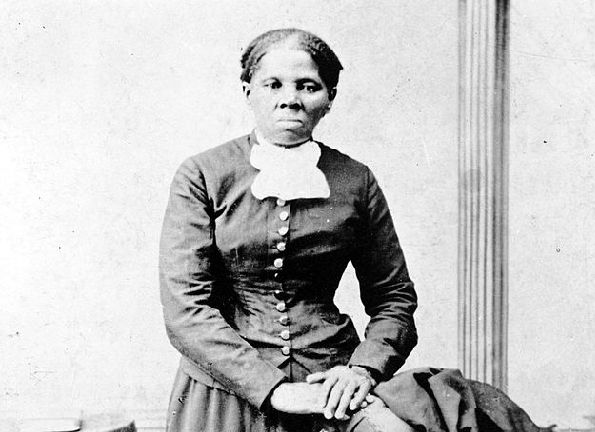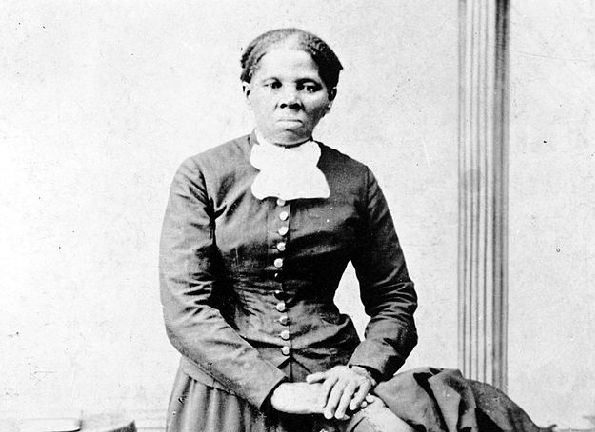CINCINNATI — Harriet Tubman never stepped foot in Southwest Ohio as part of her work on the Underground Railroad.
But the sale of new commemorative coins bearing her likeness will provide support to a Cincinnati museum committed to telling her story and those of other freedom fighters.
What You Need To Know
- H.R. 1842 directs the U.S. Mint to create three commemorative coins to honor the legacy of Harriet Tubman
- The National Underground Railroad Freedom Center in Cincinnati will receive some proceeds from the sale of the coins
- The Ohio River was a key landmark in the Underground Railroad, often separating free states from slave states
- Funds raised will help the use museum with programming and exhibits
On Aug. 3, President Joe Biden signed into law H.R. 1842, otherwise known as the “Harriet Tubman Bicentennial Commemorative Coin Act.” The law directs the federal government to mint a series of coins to honor Tubman’s legacy as a champion for justice.
The National Underground Railroad Freedom Center in downtown Cincinnati will receive a portion of the proceeds raised from the coin’s surcharges.
This year marks the 200th anniversary of Tubman’s birth.

Harriet Tubman is one of the most famous conductors on the Underground Railroad. (Photo courtesy National Underground Railroad Freedom Center)
“Harriet Tubman is one of the most revered figures in American history and in the ongoing fight for inclusive freedom,” said Woodrow Keown, Jr., president and COO of the Freedom Center.
He referred to Tubman as one of the central figures from the era of the Underground Railroad, a network of secret routes and safe houses established across the United States in the 1800s to help tens of thousands of freedom seekers find a new life.
Tubman was born Araminta “Minty” Ross in March 1822 on a plantation in Maryland. She liberated herself using the Underground Railroad in 1849, crossing from Maryland to the free state of Pennsylvania.
She returned to Maryland 13 times over the next decade to lead 70 enslaved people to freedom.
Dr. Jacqueline Hudson, an exhibit content developer at the Freedom Center, described Tubman as a “brave and tenacious pioneer in the abolitionist movement” in the 19th century.
One estimate suggests that by 1850, 100,000 enslaved people had escaped through the Underground Railroad.
As many as 40,000 fugitive slaves crossed the Ohio River on their way to freedom in free states, like Ohio or Canada.
In 1850, Cincinnati had the third-largest African American population of any city in the nation, per data from the National Underground Railroad Freedom Center.
That’s part of the reason the Freedom Center is on the banks of the Ohio River.
Tubman didn’t cross the river herself, Hudson said. But she believes Tubman “set the bar” for future generations to carry on her legacy of “(fighting) against social injustice to provide inclusive freedom for all.”
“While Ms. Harriet Tubman did not have a direct connection here in Cincinnati or the Southern region of Ohio, we are proud to continue in honoring Ms. Tubman’s legacy here at the Freedom Center,” she added.
Lawmakers introduced and passed the law with bipartisan support in both the House of Representatives and Senate. Among the sponsors was Sen. Rob Portman (R) of Ohio.
Keown, Jr. applauded the bilateral support for a piece of legislation, saying it recognizes Tubman as being “among our nation’s pantheon of heroes.”
He described the move as an “essential step” in ensuring our national heroes reflect the “true diversity of those who have contributed so significantly to our nation’s democracy.”
“Minting Ms. Tubman’s likeness on a commemorative coin will encourage people to learn more about this extraordinary leader who had such a profound impact on American history and culture,” added Keown. “Modern-day abolitionists continue to be inspired by the principles of courage, cooperation and perseverance she exemplified to better our country.”
‘Minting’ Harriet Tubman’s legacy
The Harriet Tubman Bicentennial Commemorative Coin Act creates a limited number of three new coins — 50,000 $5 gold coins, 400,000 $1 silver coins and 750,000 half-dollar coins.
Each coin will feature Tubman’s likeness on the front and an image representing the Freedom Center on the back.
Freedom Center staff is consulting on the design of the coins with input from the Commission of Fine Arts. The final decision on the designs is up to Secretary of the Treasury Janet Yellen.
The U.S. Mint, a bureau of the Department of the Treasury, is in charge of selling the coins.
A timeline for distribution is still being worked out.
The organizations benefiting from the sale of a commemorative coin like these are required, by law, to raise enough money to match, dollar-for-dollar, the surcharge revenue, according to an article by Roll Call. The politics-centric public noted that if an organization doesn’t match, the proceeds from the sale go back to the Treasury.
The Freedom Center is working with a corporate sponsor, Cincinnati-based Procter & Gamble, to create coin sales initiatives and outreach efforts.
“Enshrining Harriet Tubman’s courage and perseverance is an important step in reminding future generations of the role individual action can play in creating freedom and equality in our society,” said Damon Jones, chief communications officer of P&G. He’s also a board member of the National Underground Railroad Freedom Center.
Cody Hefner, a spokesperson for the museum, said the sale of the coins has the potential to raise “considerable” funds for both the Freedom Center and The Harriet Tubman Home in Auburn, N.Y.
Data from Roll Call showed that, as of 2018, organizations have earned on average $3.3 million in surcharges.
The Freedom Center plans to use any money raised from the sale of the coins to support the museum goal to “perpetuate Tubman’s enduring legacy to the next generation of freedom conductors,” Hefner said.
The funds will go toward the Freedom Center’s general operating budget, which supports programming, exhibit maintenance and overall museum updates, Hefner added. He noted the money would also free up funding to support other projects.
Since opening in 2004, the National Underground Railroad Freedom Center has welcomed more than 1.3 million people through its doors. The museum features a permanent collection and regular touring exhibits. It also houses a variety of events throughout the year.
The museum also hosts educational resources online. Partnerships include Historians Against Slavery, Polaris Project, Free the Slaves, U.S. Department of State and International Justice Mission.
In 2014, the Freedom Center launched a new online resource in the fight against modern slavery.




